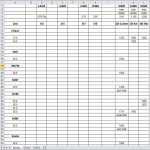I'm a stationary nerd, so I always have a special pen for "gun stuff" and a special book for "gun stuff", currently a Rotring 600 pen with Energel refill and a Midori MD notebook, B5 sized for my loading and shooting notes. I've got a fairly standard notation for reloading, if you look at any of my ladder test threads they are effectively a copy of the notes I took in the field.
Repetition and consistency are key to successful reloading, shooting, and journalling/record-keeping.
Repetition and consistency are key to successful reloading, shooting, and journalling/record-keeping.









































































